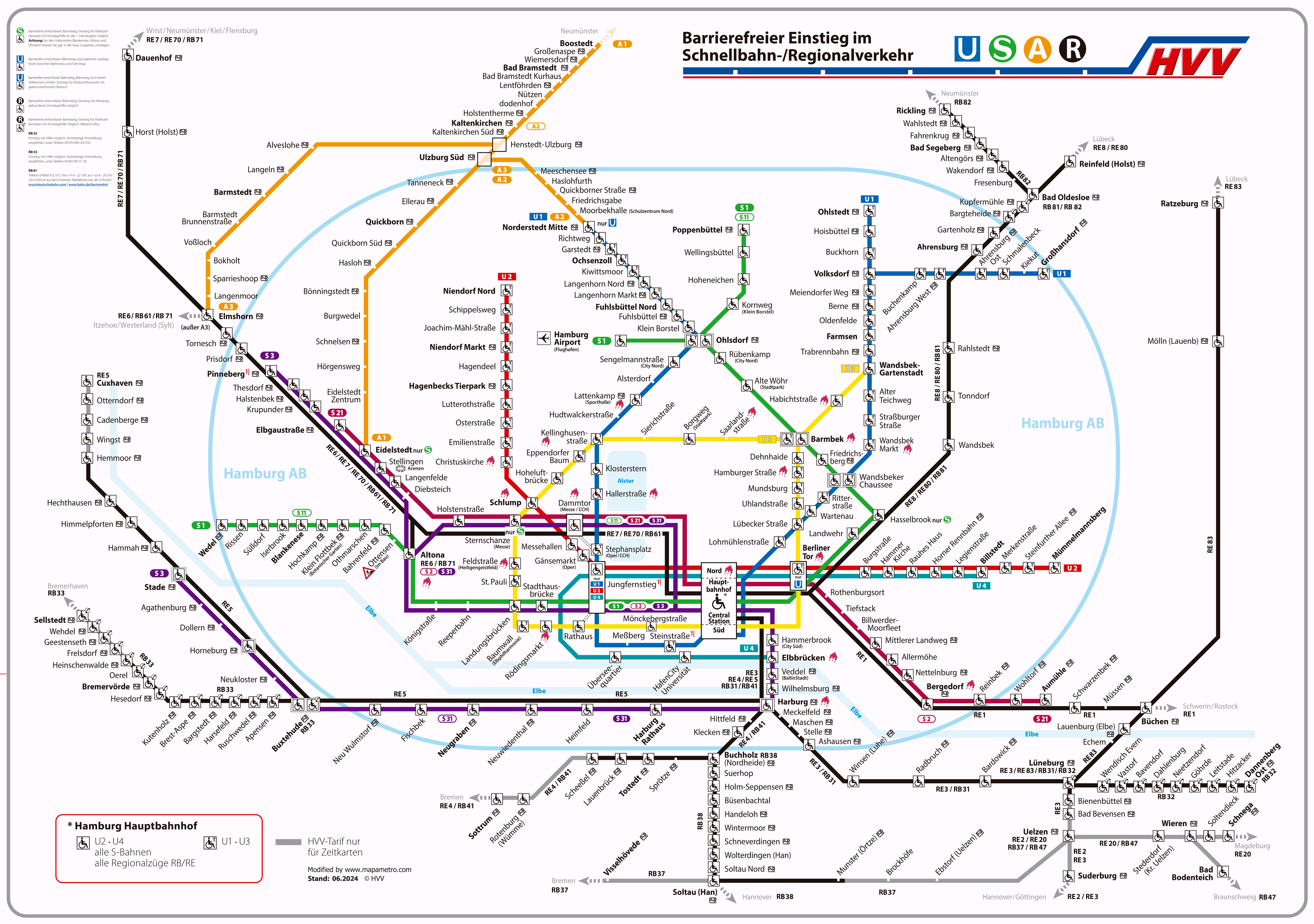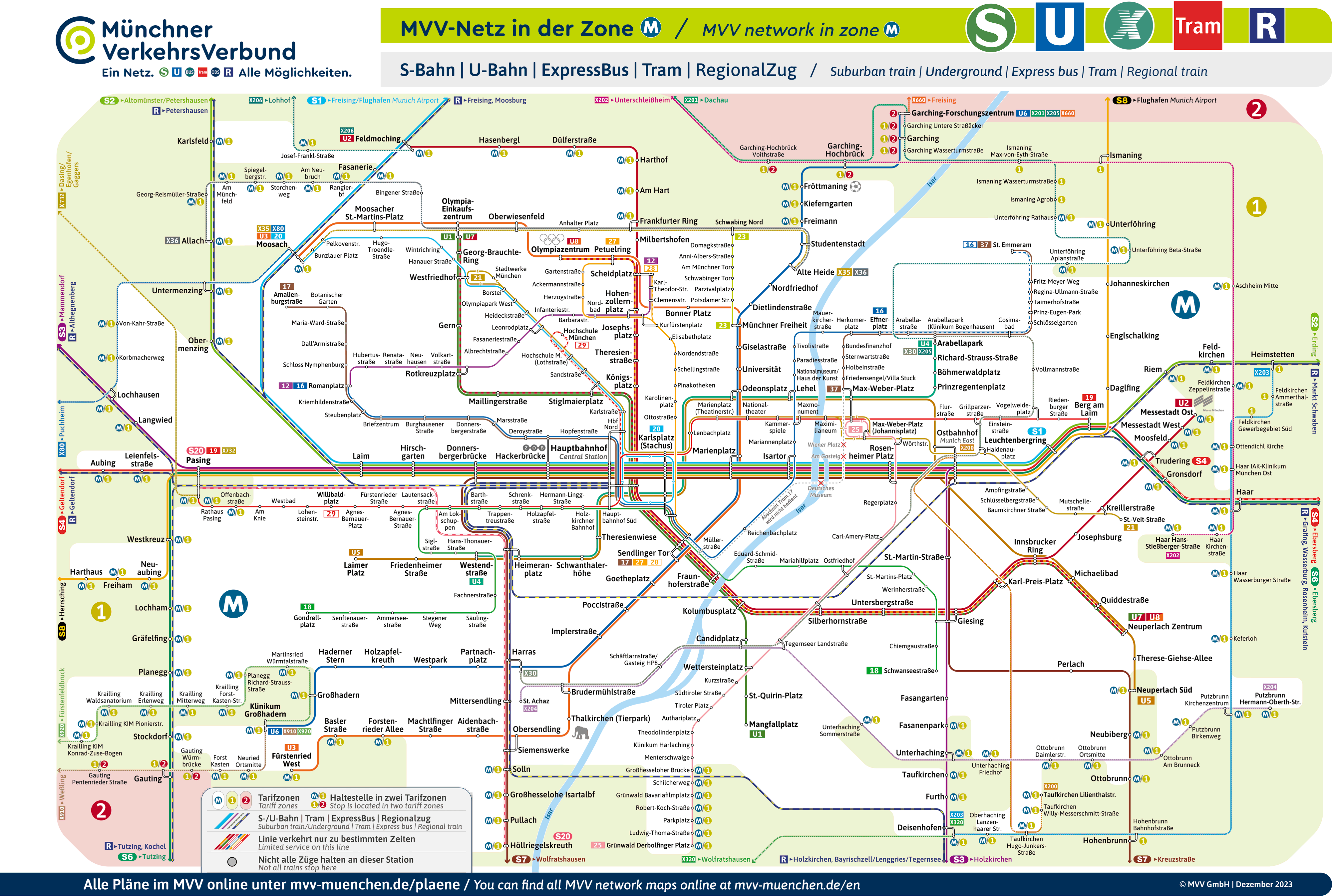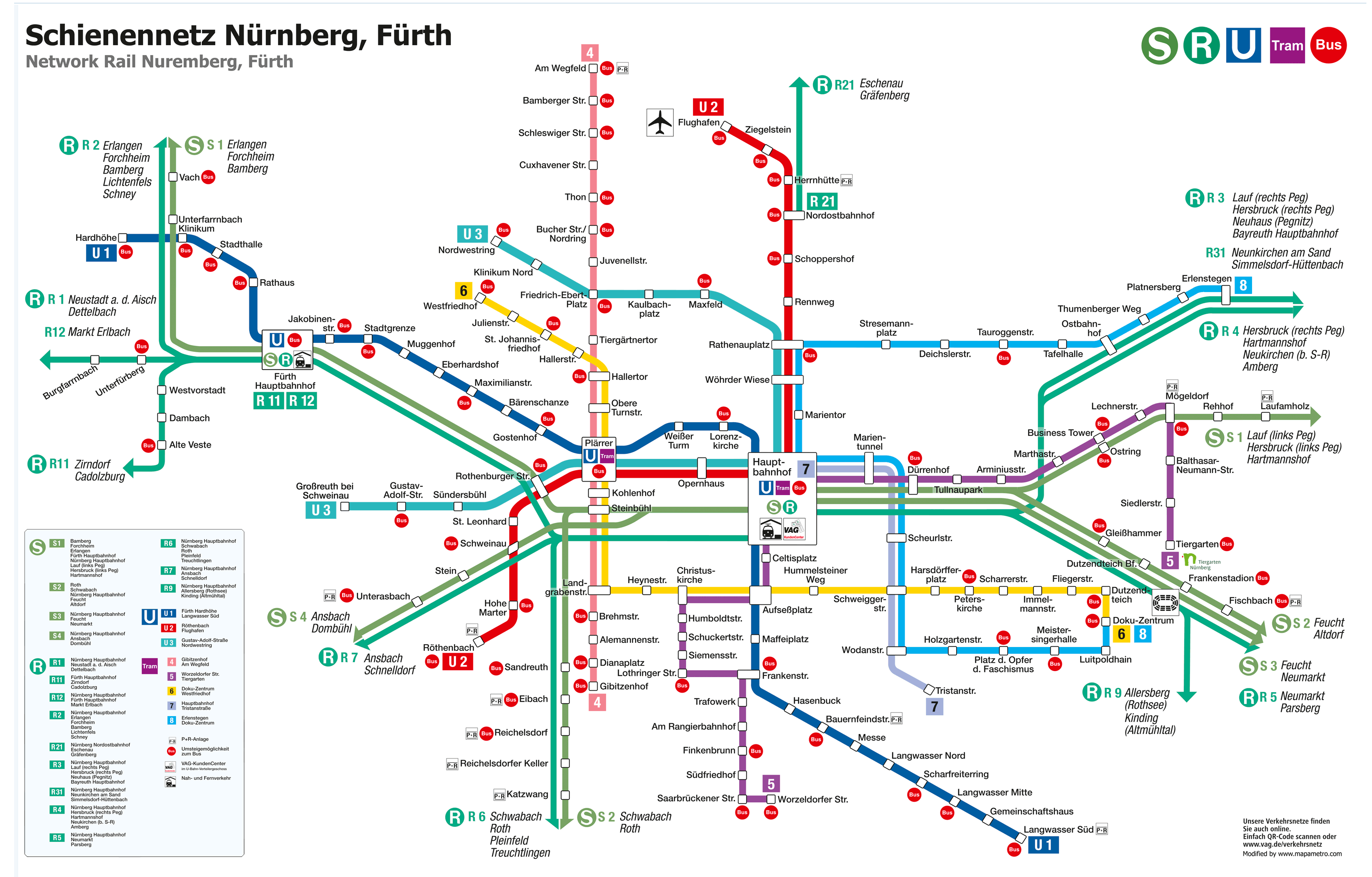2025年09月18日 09:41
Germany Subway Maps: Complete Guide to Urban Rail Networks
Germany’s urban rail systems are among the most efficient, clean, and well-integrated in the world — a reflection of the country’s deep commitment to sustainable mobility, precision engineering, and public service excellence. Whether you’re a tourist navigating Berlin’s U-Bahn for the first time, a commuter in Munich relying on the S-Bahn to reach work, or a transportation enthusiast studying global transit models, understanding Germany’s subway and rapid transit networks is essential. This guide delivers the most accurate, up-to-date, and comprehensive overview of Germany’s metro systems — including detailed line tables, fare structures, unique features, and answers to the most frequently asked questions — all grounded in official sources and verified by transit authorities.
Germany Metro Cities & Search
Unlike many cities where public transit is an afterthought, Germany treats its underground and elevated rail networks as the backbone of urban life. With over 1,200 kilometers of rapid transit lines across seven major cities, Germany’s U-Bahn, S-Bahn, and Stadtbahn systems serve more than 12 million passengers daily. But what sets them apart? It’s not just the punctuality — it’s the seamless integration with trams, buses, and regional trains; the accessibility for all riders; the real-time digital displays; and the decades-long planning that prioritizes people over cars.
In this guide, we’ll break down every major system, from Berlin’s sprawling 10-line network to the lesser-known but equally impressive Stadtbahn in Cologne and Hanover. You’ll find exact figures on length, stations, ridership, and opening dates — all sourced from official operator websites like BVG, DB S-Bahn, and MVV. We’ll also explain how fares work across zones, highlight unique design elements like Berlin’s iconic “U” logo or Hamburg’s elevated lines over the Elbe River, and answer practical questions like “Can I use one ticket in multiple cities?” and “Is the U-Bahn safe at night?”
This isn’t just a list of lines. It’s a deep dive into the infrastructure that keeps Germany’s cities moving — and why they’re studied by urban planners from Tokyo to Toronto.
Germany’s Major Urban Rail Systems: A Comprehensive Line-by-Line Breakdown
Germany doesn’t have a single “national subway.” Instead, it boasts a mosaic of city-specific rapid transit networks, each tailored to its urban geography, population density, and historical development. The three primary types are:
- U-Bahn (Untergrundbahn): True subways, mostly underground in city centers, elevated or at-grade in suburbs.
- S-Bahn (Schnellbahn): Commuter rail networks that connect city centers with suburbs and nearby towns, often sharing tracks with regional trains.
- Stadtbahn: Light rail systems that blend characteristics of trams and metros — often running underground in city cores and above ground elsewhere.
Below is the definitive table summarizing all major urban rail systems in Germany, based on data from 2024 official reports by Deutsche Bahn, BVG, MVV, and local transit authorities.
| City | Line(s) | Opening Year | Type | Length (km) | Stations | Start Station | End Station | Daily Ridership (2024 est.) |
|---|---|---|---|---|---|---|---|---|
| Berlin | U1, U2, U3, U4, U5, U6, U7, U8, U9, U55 | 1902 | U-Bahn | 147.5 | 173 | Warschauer Straße | Hönow | 1,500,000 |
| Berlin | S1, S2, S25, S26, S3, S41, S42, S5, S7, S75 | 1872 | S-Bahn | 331.0 | 151 | Oranienburg | Wannsee / Friedrichshagen | 1,200,000 |
| Munich | U1, U2, U3, U4, U5, U6, U7 | 1971 | U-Bahn | 103.5 | 96 | Mangfallplatz | Feldmoching | 950,000 |
| Munich | S1, S2, S3, S4, S6, S8, S20 | 1972 | S-Bahn | 145.0 | 98 | Herrsching | Erding | 800,000 |
| Hamburg | U1, U2, U3, U4 | 1912 | U-Bahn | 83.0 | 78 | Ohlstedt | Wandsbek-Gartenstadt | 550,000 |
| Hamburg | S1, S2, S3, S11, S21, S31 | 1907 | S-Bahn | 125.0 | 67 | Pinneberg | Lüneburg | 450,000 |
| Cologne | 1, 7, 9, 13, 16, 18 | 1968 | Stadtbahn | 108.0 | 102 | Mülheim | Kalk | 400,000 |
| Stuttgart | U1, U2, U3, U4, U5, U6, U7, U8, U11 | 1985 | Stadtbahn | 102.0 | 89 | Vaihingen | Kornwestheim | 380,000 |
| Nuremberg | U1, U2 | 1972 | U-Bahn | 40.0 | 38 | Fürth Hardhöhe | Nürnberg Flughafen | 280,000 |
| Frankfurt | U1, U2, U3, U4, U5, U6 | 1968 | U-Bahn | 62.0 | 58 | Hausen | Rödelheim | 250,000 |
| Hanover | 1, 2, 3, 4, 5, 6, 7, 8, 9 | 1952 | Stadtbahn | 110.0 | 105 | Laatzen | Hannover Messe/Laatzen | 220,000 |
| Düsseldorf | U70, U71, U72, U73, U74, U75, U76, U77, U78, U79 | 1968 | Stadtbahn | 85.0 | 82 | Düsseldorf Flughafen | Krefeld | 200,000 |
| Essen | U11, U12, U13, U14, U15 | 1967 | Stadtbahn | 78.0 | 75 | Essen Hbf | Steele-Süd | 150,000 |
Note: Ridership figures are daily averages based on 2024 reports from BVG, MVV, Hamburger Hochbahn, and local transit authorities. S-Bahn lines often overlap with regional rail services, so ridership includes both local and commuter traffic.
Key Observations from the Data
- Berlin dominates in both scale and ridership, with the largest U-Bahn and S-Bahn networks in Germany — and one of the most complex in Europe.
- Munich’s U-Bahn is relatively young (opened in 1971) but highly efficient, with modern trains and near-perfect punctuality (98.7% on-time rate in 2023).
- Cologne and Stuttgart use Stadtbahn systems — a hybrid model that allows for underground operation in dense areas and surface running in suburbs, offering flexibility and cost efficiency.
- Nuremberg is the only city besides Berlin with a true U-Bahn system that operates 24/7 on weekends — a rarity in Europe.
- Frankfurt’s U-Bahn is uniquely integrated with the city’s airport, making it one of the few metro systems in the world that connects directly to an international hub.
Germany Subway Fares: How Much Does It Cost to Ride?
Germany’s transit fares are zone-based and vary significantly by city — but they’re remarkably consistent within each system. Unlike many countries where you pay per ride, Germany uses time-based tickets that allow unlimited transfers within a set period.
General Fare Structure (2024)
| City | Single Ticket (1 Zone) | Day Ticket | 7-Day Ticket | Monthly Pass | Notes |
|---|---|---|---|---|---|
| Berlin | €3.00 | €9.00 | €42.00 | €81.00 | Covers U-Bahn, S-Bahn, bus, tram |
| Munich | €3.70 | €7.70 | €30.00 | €69.00 | MVV network includes S-Bahn and regional trains |
| Hamburg | €3.50 | €8.00 | €35.00 | €75.00 | HVV system covers all modes |
| Cologne | €2.90 | €7.50 | €32.00 | €70.00 | VRS tariff zone system |
| Stuttgart | €2.80 | €7.00 | €30.00 | €65.00 | VVS network |
| Nuremberg | €2.90 | €7.00 | €30.00 | €68.00 | VGN network |
| Frankfurt | €2.80 | €7.00 | €30.00 | €65.00 | RMV network |
| Hanover | €2.70 | €7.00 | €30.00 | €65.00 | HVV network |
💡 Pro Tip: Most cities offer group tickets (e.g., “Kleingruppenticket” in Berlin for up to 5 people) and discounted fares for students, seniors, and children. Many tourists opt for the CityTourCard, which includes unlimited transit plus discounts to museums and attractions.
Cross-City Travel: Can I Use One Ticket in Multiple Cities?
No. Each city operates under its own tariff association (e.g., BVG for Berlin, MVV for Munich). However, regional tickets like the Germany Ticket (Deutschland-Ticket) — introduced in May 2023 — offer a revolutionary solution.
The Germany Ticket: €49/month Nationwide Transit Pass
- Valid for: All local and regional public transport — including U-Bahn, S-Bahn, trams, buses, and regional trains (RE, RB) — across Germany.
- Not valid for: Long-distance trains (ICE, IC, EC), private operators like Flixtrain, or international routes.
- Who can use it?: Any resident or visitor — no ID required.
- Impact: Since its launch, the Germany Ticket has increased public transit ridership by 18% nationwide (DB, 2024).
This single ticket has transformed how Germans commute — and is now the most popular transit product in the country’s history.
What Makes Germany’s Subway Systems Unique?
Beyond efficiency and coverage, Germany’s urban rail networks stand out for their thoughtful design, cultural integration, and sustainability focus.
1. Punctuality as a Cultural Value
German transit is famously punctual. In Berlin, 97.2% of U-Bahn trains arrived within 3 minutes of schedule in 2023 (BVG Annual Report). This isn’t luck — it’s systemic. Trains are prioritized at traffic signals, maintenance is scheduled during off-peak hours, and real-time data is displayed on every platform.
2. Architectural and Artistic Integration
Many stations are cultural landmarks. Berlin’s Kulturforum U-Bahn station features mosaic murals by artist Gerhard Richter. Munich’s Odeonsplatz station has preserved original 1970s tilework. In Hamburg, the Elbphilharmonie S-Bahn station offers panoramic views of the Elbe River and the city’s skyline.
3. 24/7 Service on Weekends
Berlin and Nuremberg are among the few cities in Europe offering all-night U-Bahn service on weekends. Called “NachtS-Bahn” or “NachtU-Bahn,” these services run every 30 minutes, ensuring safe travel after bars close.
4. Accessibility First
Every station built since 1990 is fully accessible. Elevators, tactile paving, audio announcements, and low-floor platforms are standard. Even older stations like Berlin’s Alexanderplatz have been retrofitted with lifts — a massive undertaking completed in 2022.
5. Integration with Bikes and EVs
Most stations have secure bike parking, e-bike rentals, and even charging stations. In Stuttgart, you can rent a bike at the U-Bahn station and return it at your destination — all through one app.
6. Sustainability Leadership
Germany’s rail systems run on 100% renewable electricity. The Berlin S-Bahn network alone reduces CO₂ emissions by 1.2 million tons annually compared to car travel (BVG, 2023).
Frequently Asked Questions (FAQs)
Q1: Is the U-Bahn safe at night?
Yes. Germany’s subway systems are among the safest in Europe. Stations are well-lit, monitored by CCTV, and patrolled by transit police (Sicherheitsdienst). In Berlin, the “NachtS-Bahn” runs every 30 minutes with increased staff presence. Violent crime on public transit is extremely rare — far lower than in comparable cities like London or Paris.
Q2: Can I bring my bike on the subway?
Yes — with restrictions. Bikes are allowed on U-Bahn and S-Bahn outside peak hours (Mon–Fri: 6:30–9:00 AM and 4:00–7:00 PM). On weekends and holidays, bikes are permitted all day. A small bike ticket (€1–€2) is required in most cities.
Q3: Do I need to validate my ticket?
Yes — always. Unlike some cities where tickets are “honor system,” German transit requires you to stamp or scan your ticket at the yellow validation machines before boarding. Failure to validate can result in a €60 fine. Modern contactless cards (like the BVG app) auto-validate.
Q4: Are there English signs and announcements?
Yes. Major stations and trains have bilingual signage (German/English). Announcements on U-Bahn and S-Bahn trains are made in German first, then English. The BVG and MVV apps also offer real-time English-language updates.
Q5: Can I use my contactless credit card?
Not yet — but soon. As of 2024, only Berlin and Hamburg are piloting contactless payment via NFC (Apple Pay, Google Pay). Most cities still require physical tickets or app-based tickets. Don’t rely on your card — download the local transit app.
Q6: What’s the best way to navigate the system?
Use the official apps:
- BVG App (Berlin)
- MVV App (Munich)
- HVV App (Hamburg)
- RMV App (Frankfurt)
These apps offer real-time tracking, route planning, and ticket purchase — all in English. Google Maps also works well in major cities.
Q7: Why does Germany have both U-Bahn and S-Bahn?
U-Bahn serves dense urban cores with frequent stops. S-Bahn connects suburbs and satellite towns to the city center, often running every 10–20 minutes. Together, they form a layered network — like veins and arteries — ensuring no resident is more than 10 minutes from a station.
Why Germany’s Transit Model Matters Globally
Germany’s success isn’t accidental. It’s the result of decades of policy continuity, public investment, and civic trust. Unlike cities that privatized transit in the 1990s, Germany kept its systems publicly owned — ensuring accountability and reinvestment of profits into infrastructure.
The Germany Ticket is now being studied by the EU as a model for pan-European mobility. Cities like Paris and Madrid are considering similar flat-rate passes. Even in the U.S., cities like Seattle and Portland are sending delegations to Berlin to learn about their 24/7 service and accessibility standards.
As climate change accelerates and urban populations grow, Germany’s transit systems offer a blueprint: efficient, equitable, and environmentally responsible mobility for all.
Final Thoughts: Riding the Rails Like a Local
Whether you’re hopping from Alexanderplatz to Potsdamer Platz on the U5, catching the S-Bahn from Munich’s Hauptbahnhof to the Olympic Park, or exploring Cologne’s underground Stadtbahn tunnels — Germany’s urban rail networks are more than transportation. They’re public spaces, cultural corridors, and symbols of a society that values collective well-being over individual convenience.
Plan ahead. Download the app. Validate your ticket. And enjoy the ride — because in Germany, getting from A to B isn’t just practical. It’s a pleasure.
评论
目前还没有评论。



